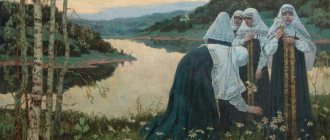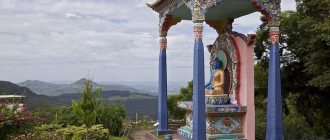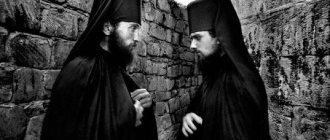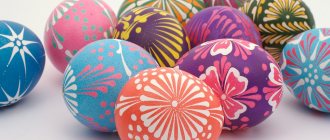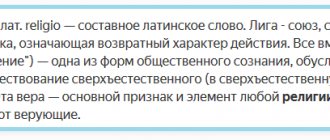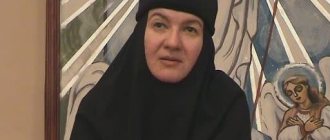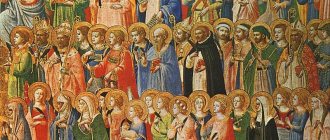During the solemn initiation ceremony, a Buddhist, taking his first monastic vows, receives the corresponding attributes, including monastic vestments, which are designed to hide individuality and demonstrate belonging to the community (sangha). The rules and requirements for such robes are collected in the canonical Vinaya code.
Since a monk, leaving worldly life, renounces its values, he should not own any valuable things. And therefore his clothes consist of the minimum necessary set of things of minimal value. It is believed that it was originally made from rags and painted with “earth”. Now in different traditions and schools there are differences, but, in general, they come down to three main elements of clothing: lower, upper and outer.
The traditional colors of vestments were also developed based on the availability of inexpensive natural dyes in a given area, and therefore they are different. So in Sri Lanka, Myanmar and Thailand, where the Theravada tradition is followed, brown and mustard colors are used.
Monks in cities wear orange robes, while monks in the “forest” tradition wear burgundy. The same burgundy color, along with yellow-orange, is characteristic of India, Tibet, Mongolia, Buryatia and Kalmykia (Mahayana tradition).
In the Far East, where the Soto Zen tradition is widespread, dark shades are characteristic:
- black, white in Japan;
- black, gray and dark brown in China,
- gray, burgundy in Korea.
Since monastic robes are a symbol of a tradition that is passed down from master (teacher) to disciple, and come from the robes of Buddha Shakyamuni himself, they are worshiped as shrines. Therefore, the Vinaya strictly describes the procedure for wearing clothes, making them, cleaning them, replacing them, accepting them as a gift or exchanging them, etc.
For example:
- you cannot be separated from any of your clothes even for one night;
- a monk must make, dye, and clean his own clothes;
- if the underwear has worn out so much that it has more than 10 patches, then it must be replaced with a new one;
- in the Theravada tradition, worn-out clothes are burned, while in the Mahayana tradition they are required to be left in a “clean” place;
- In the Soto Zen tradition there are whole rituals of putting on and taking off clothes.
Although monastic clothing serves the principle of unification in appearance, decorative elements are nevertheless permitted that show the piety and asceticism of a Buddhist. In modern trends, these are decorative patches or the effect of artificial aging of fabric.
New times are also manifested in the use of modern accessories in clothing, synthetic or mixed fabrics dyed with aniline dyes, and the use of modern linen (Soto Zen and Mahayana).
Who has the right to wear a cassock?
Cassock
- the lower vestment of the Orthodox clergy and monasticism - long toe-length clothing with long narrow (unlike a cassock) sleeves. It is used not only during worship, but also outside it.
Interesting materials:
How to choose a fan for a computer case? How to completely empty the recycle bin on your computer? How to use iTunes on a computer? How to change the password to log into your computer? How to calculate computer power? How to calculate Internet traffic on a computer? How to see the IP address on a computer? How can I see what was opened on my computer? How to view photos in iCloud via computer? How to view Geolocation of a photo on a computer?
Monastic clothing
“Putting on monastic robes is a sacrament, just like laying crowns in marriage. You put on monastic robes instead of crowns. And so you are disheartened by Christ, taking a vow of virginity for the rest of your life,” said Elder Joseph of Athos.
Black monastic vestments... For some it causes sadness and regret, for others there is bewilderment and questions. For what reason is it different from ordinary worldly clothing? Why is it black? Does it have any symbolic meaning? The Holy Fathers tell us that just as warriors, entering military service, leave their previous clothes and put on military clothes, so a monk, like the good warrior of Jesus Christ (2 Tim. 2:3), puts on special clothes, like with all the armor of God, according to the expression of the Apostle Paul (Eph. 6:11). In addition, the black monastic vestment is also a symbol of repentance, mourning for sins, crying for the lost heavenly bliss.
Thus, the black color of all monastic clothing is by no means accidental. Also, all parts of the monastic vestment have their own symbolic meaning. Let's look at them in the order in which they are worn during monastic tonsure.
First of all, a hair shirt or tunic . Nowadays this is the name for a long shirt made of simple fabric, but previously a hair shirt was woven from camel hair or sheep's wool (hence its name) and worn on a naked body, and the coarse hair constantly pricked it painfully. This constantly served as a reminder for the monk of the need for uncomplaining patience with all life’s difficulties, reproaches from people, various sorrows and troubles.
On top of the hair shirt, the abbot performing tonsure puts a paraman . This is a small quadrangular board with the image of the cross and other instruments of the Savior’s suffering, as well as with the words of the Holy Apostle Paul depicted on it from his letter to the Galatians:
.
“For I bear the marks of the Lord Jesus in my body” (Gal. 6:17). According to the rite of monastic tonsure, the paraman is a symbol of the betrothal of the great angelic image and the taking upon oneself of the good yoke of Christ, in fulfillment of the words of the Savior Himself: “Let him deny himself, and take up his cross, and follow Me” (Mark 6:34).
Along with the paraman, a cross (usually a simple, wooden one) is put on the person being tonsured - in remembrance of the Lord’s suffering on the cross and as a sign of following Him in bearing one’s cross, that is, enduring all the sorrows and suffering that occur.
Then a cassock (black dress) is put on, its simplicity reminding the monk of his vow of voluntary poverty, as well as the words of the holy Apostle Paul: “I impute all the ways of being, that I may gain Christ” (Phil. 3:8).
The belt , according to the explanation of the Monk Abba Dorotheos, also has its own symbolic meaning. First of all, according to the monk, it is a symbol of the fact that a monk must always be ready for ascetic work, because in ordinary life, too, when we want to begin some work, we first gird ourselves and only then begin to work; It is not without reason that the Lord says in the Gospel: “Let your loins be girded” (Luke 12:35). Secondly, since the belt in ancient times was made from the skin of killed animals, it can be considered a symbol of the mortification of lust, as well as a reminder of the words of the Apostle: “Put to death your evils that are on the earth: fornication, uncleanness, passion, evil lust...” (Col. 3, 5).
The next garment is a cassock , called in the rank of monastic tonsure “the robe of joy and joy.” This robe signifies the putting aside of all sorrows and embarrassments that usually come from the sorrows and troubles that befall us, as well as the unceasing spiritual joy acquired by the monastic through the acquisition of the grace of the Holy Spirit through the fulfillment of the vow of obedience, which again introduces us into the closest spiritual communion with the Lord.
Following the cassock, a mantle , which in the rank of tonsure is called the “robe of salvation” or “garment of incorruptibility and purity.” On the one hand, it means the protecting and covering power of God, on the other hand, the monk’s constant fulfillment of the rules of his chosen way of life. The mantle has no sleeves, which signifies that the monastic has neither his hands nor other members of his body free for worldly activities, for sin. In addition, the mantle is very spacious and can flutter freely, which is reminiscent of winged, fast-moving angels and means that the monk, like an angel, must always be ready for every divine work. “I like everything to run, quickly. Monasticism is angels. They must fly,” said the modern ascetic of piety, prayer book and confessor Archbishop Anthony (Golynsky-Mikhailovsky).
The holy fathers compared the mantle with the epanchas (wide cloaks) of the soldiers, which looked like a royal scarlet robe, by which everyone recognized that they served the king. Likewise, the mantle is a sign that the monk is a warrior of Christ and therefore is obliged to endure all the suffering that Christ endured for us. “For when our Lord suffered,” writes the Venerable Abba Dorotheos, “He was dressed in a scarlet robe, firstly, as a king, for He is the King of kings and Lord of lords, and then, also as one mocked by wicked people. So we vow to endure all His sufferings. And just as a warrior should not leave his service in order to become a farmer or merchant, for otherwise he will lose his dignity, so we must strive, and not worry about anything worldly, and serve the one God.”
The hood in the rank of tonsure is called the helmet of salvation and shameless hope, according to the words of the holy Apostle Paul:
“Putting on the breastplate of faith and love and the helmet of the hope of salvation” (1 Sol. 5:8). And in another place he says: “And take the helmet of salvation as a means of defense against the wiles of the devil” (Eph. 6:11:17).
When being tonsured, a monk puts on shoes and sandals , “so that he hurries steadily along the path of the Gospel, as if he were running to a mountain, where he will be worthy of the heavenly life assigned to us,” says St. Simeon of Thessaloniki.
Finally, the monk is given a rosary , which is called the spiritual sword, and the constant, nightly prayer of the Jesus Prayer is bequeathed: “Take, brother, the spiritual sword, which is the word of God, to the constant Jesus Prayer, for the name of the Lord Jesus is always in your mind, in your heart and You must have it in your mouth, saying continually: “Lord Jesus Christ, Son of God, have mercy on me a sinner.” According to Saint Ignatius (Brianchaninov), exercise in unceasing prayer is the duty of every monk, entrusted to him by the commandment of God and monastic vows. And Saint John Chrysostom says:
"Brethren! I beg you, do not allow yourself to ever stop performing the rule of this prayer or to despise it. A monk, whether eating or drinking, sitting or serving, traveling, or whatever else he is doing, must constantly cry out: “Lord Jesus Christ, Son of God, have mercy on me!” So that the name of the Lord Jesus, descending into the depths of the heart, humbles the serpent, which has the pastures of the heart, and saves and enlivens the soul. Continue continually in the name of the Lord Jesus, so that the heart of the Lord and the Lord may consume the heart, and the two may be one.”
When tonsured, the monk also receives a cross and a candle . The cross is a symbol of faith and a reminder of the words of the Lord: “Whoever wants to come after Me, let him deny himself, and take up his cross, and follow Me” (Matthew 16:24). The candle is a symbol of the fact that a newly tonsured person should become “the light of the world” through a pure and virtuous life, according to the words of the Savior: “So let your light shine before men, so that they may see your good deeds and glorify your Father who is in heaven” (Matthew 6, 16).
This is the attire of those who have been worthy of tonsure into the minor schema or mantle. Those who have received tonsure into the great schema or the great angelic image also receive a kukol with analava and a great paraman .
A doll is a small, pointed hat, similar to those worn on babies. For monastics, kukul is a reminder of the need to acquire infantile gentleness, because, according to the word of the Lord, unless you turn and become like children, you will not enter the Kingdom of Heaven (Matthew 18:3). “Do not be children in your minds, but be childish in malice,” the Apostle Paul also says (1 Cor. 14:30). The baby is not malicious: if he is dishonored, he does not get angry if something is taken away, he does not grieve, if he is praised, he does not become vain. He does not avenge an insult and does not seek glory. Also, the kukol is a symbol of God’s grace. Just as a doll covers and warms a baby’s head, so the grace of God covers the mind of an ascetic and helps him to pray and resist passions.
Analav , or small schema , is a schematic vestment, in front and behind it has the sign of a cross in the shape of a cross, or, more precisely, depicting the cross itself, and signifying complete death for the world and everything worldly.
The schematic paraman differs from the monastic paraman in its larger size and “multi-cross” (includes 40 knitted crosses).
So, we can say that all vestments point monastics to the virtues that are obligatory for them: imitation of our Lord Jesus Christ in the humble and uncomplaining enduring of all sorrows and suffering, meekness, kindness, forgiveness, chastity and, of course, unceasing prayer. In addition, the Monk Simeon of Thessaloniki makes another remarkable comparison. He says that since the monk is, as it were, dead to worldly life, then we can say that the mantle symbolizes the coffin, and the cassock and hair shirt are funeral accessories. The doll symbolizes the head sir, while the paraman and other clothes depict the Savior’s suffering on the cross, since the monk, as it were, is crucified for the world and makes a corresponding vow. In general, the entire monk (as well as the schema-monk) in vestments is likened to the one crucified for us, who died and was wrapped in funeral shrouds and the Lord. All this is for the monastic a constant reminder of his main goal: having been crucified with the Lord for worldly life and dying for it, to be resurrected in soul in the Spirit and to become a partaker of the ineffable spiritual blessings about which the holy Apostle Paul speaks: “Whose eye has not seen, and ear has not heard , and the heart of man has not sighed, what God has prepared for those who love Him” (1 Cor. 2:9).
“So,” concludes the Venerable Abba Dorotheos, addressing the monastics, “let us live in accordance with our attire, so that, as the fathers said, it does not turn out that we are wearing someone else’s attire.”
Why are the colors different?
Previously, clothes were made from rags, and organic matter was used as a dye: earth, plants, wood. Modern technologies are making their own adjustments, and now it is allowed to use synthetic fabrics, unnatural colors, and even wear the underwear we are accustomed to. However, the color of kashaya remains traditional.
The generally accepted color of Buddhism is orange. It carries within itself the renunciation of vicious qualities: passion, desire, anger, envy, malice. At one time, Teacher Shakyamuni himself put it on himself.
Today's color choices are determined historically and geographically. Everything is very simple: the clothes were the color that an inexpensive organic dye could give them in the immediate vicinity of the temple. Naturally, the color changed depending on the area, and subsequently it was assigned to each territory, monastery or entire school of Buddhism.
Zen
Or rather, Soto Zen covered the Far Eastern region - Chinese, Korean, Japanese lands.
Chinese monks prefer dark colors: black, brown, gray - which indicates their readiness to sacredly honor all traditions. The color yellow was immediately rejected in these latitudes, because it is associated with the power of the emperor.
In Japan, preference is given to black, especially in tandem with white. And Korean novices are dressed in a gray top with a burgundy cape - a sign of selfless obedience and zealous service.
Mahayana and Vajrayana
Buddhist philosophy has a wide geography: from the borders of India to the Russian republics - Buryatia, Kalmykia - capturing Tibet and Mongolia. Almost the same colors are used here as in Mahayana - from contrasting orange to dark brown.
The choice is burgundy, which, however, can vary from reddish to chocolate. You can often see a combination with bright yellow or mustard.
In Russia they also stick to modest, dark colors.
Sometimes you can see Indian monks wearing robes made of white cloth. This has nothing to do with mourning, as is usually customary in India - in relation to Buddhism, it is a symbol of mother, purification, light, good thoughts.
Theravada
The Theravada tradition extends to Myanmar, Thailand, and Sri Lanka. The colors here are varied - from orange, yellow and mustard to brown and burgundy.
In Myanmar, the most common color is burgundy, which sometimes reaches an eggplant tone. This is believed to mean humility and a willingness to fully surrender to faith.
Thailand is most often replete with yellow and orange, which carry good energy and symbolize complete submission to the Buddha.
There is such a pattern that monks in settlements - villages, villages, cities - most often wear yellow and orange kashai, and novices of forest monasteries wear darker colors.

